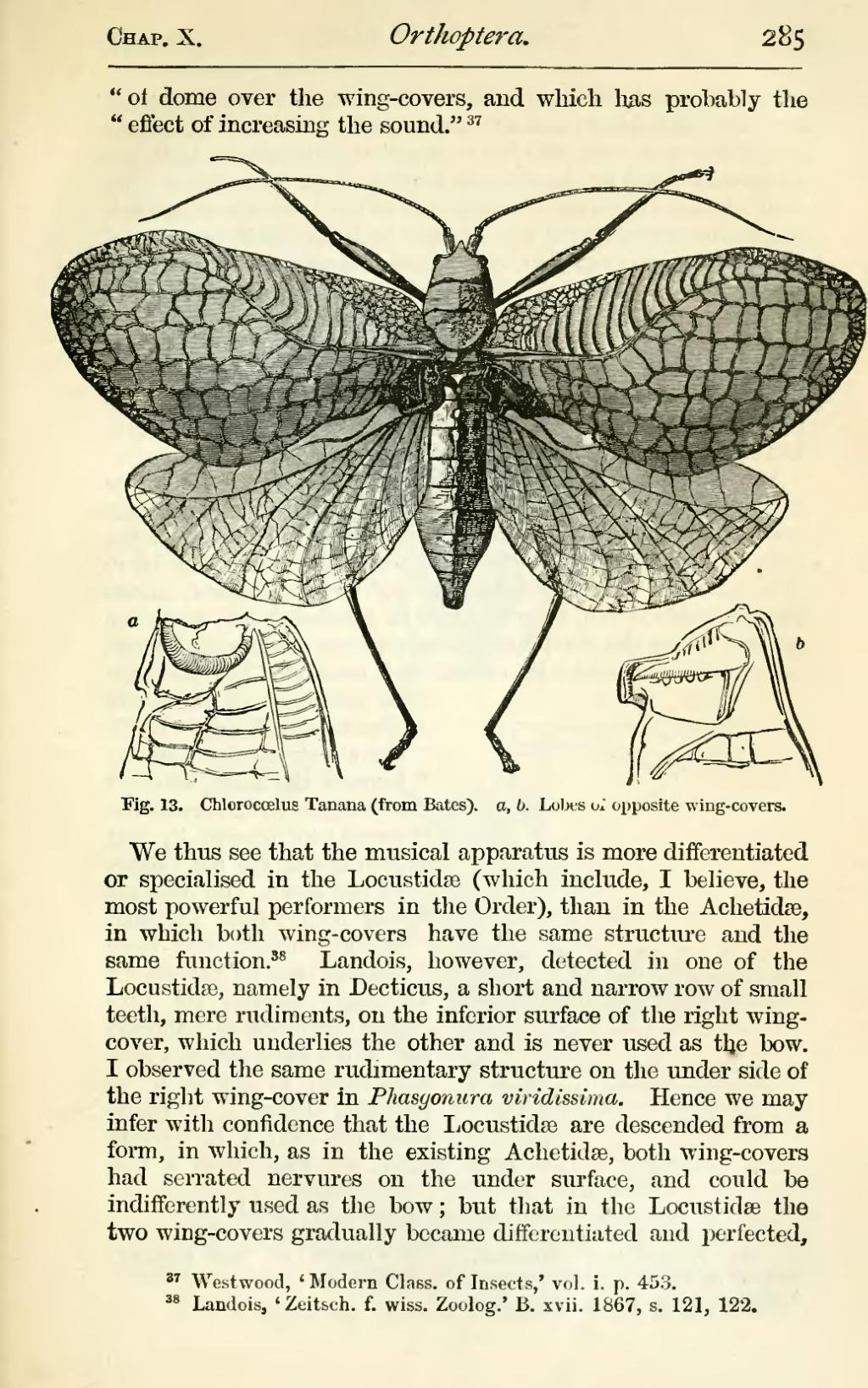of dome over the wing-covers, and which has probably the effect of increasing the sound."[1]

Fig. 13. Chlorocœlus Tanana (from Bates), a, b. Lobes of opposite wing-covers.
We thus see that the musical apparatus is more differentiated or specialised in the Locustidæ (which include, I believe, the most powerful performers in the Order), than in the Achetidæ, in which both wing-covers have the same structure and the same function.[2] Landois, however, detected in one of the Locustidæ, namely in Decticus, a short and narrow row of small teeth, mere rudiments, on the inferior surface of the right wing-cover, which underlies the other and is never used as the bow. I observed the same rudimentary structure on the under side of the right wing-cover in Phasgonura viridissima. Hence we may infer with confidence that the Locustidæ are descended from a form, in which, as in the existing Achetidæ, both wing-covers had serrated nervures on the under surface, and could be indifferently used as the bow; but that in the Locustidæ the two wing-covers gradually became differentiated and perfected,
